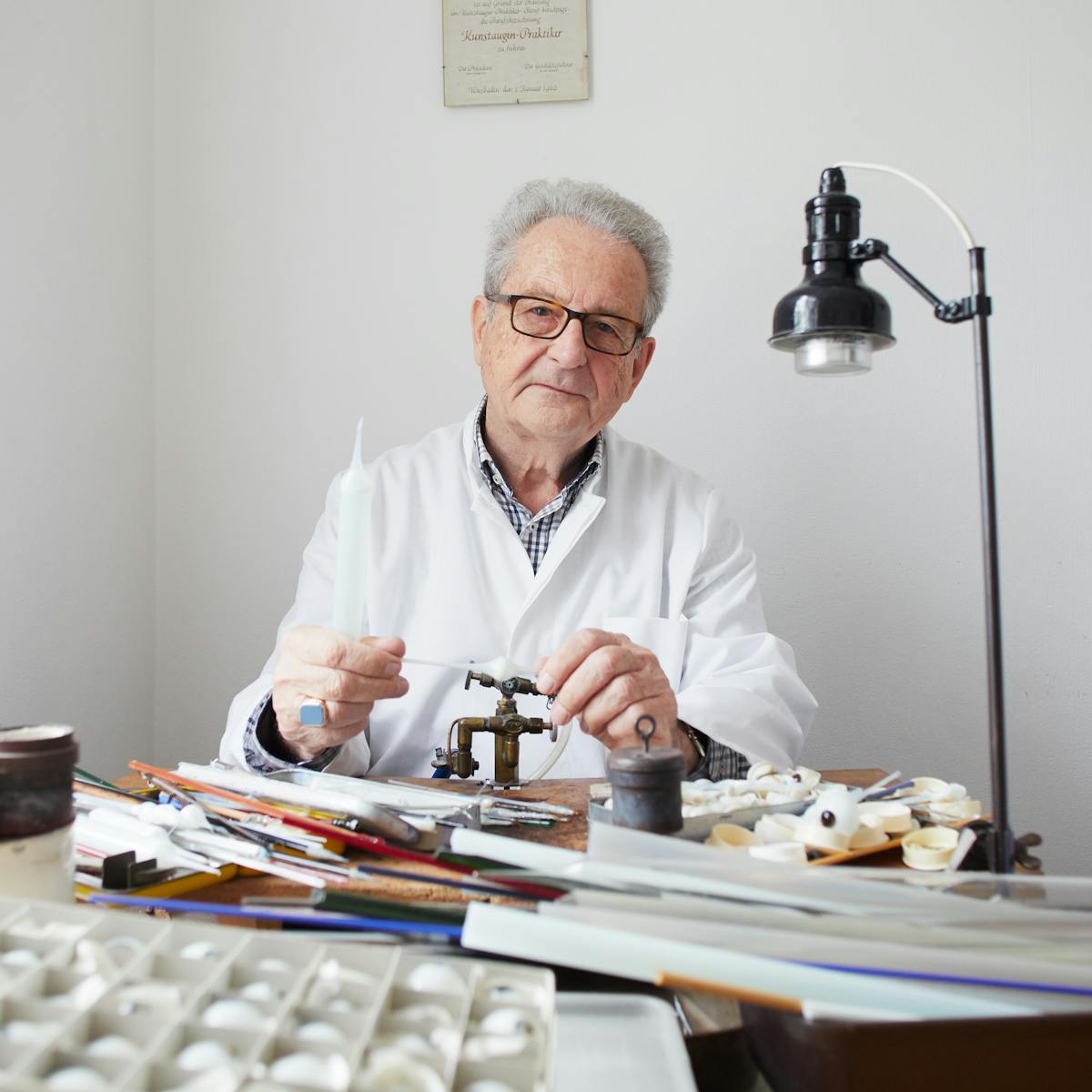Ocularist Jost Haas works only with glass, custom making artificial eyes in front of his patients. As the last maker of glass eyes in Britain, he reflects on a trade that combines intricate craftwork, medical knowledge and psychological support.
The first thing Jost Haas notices when he meets someone new is their eyes. He’s not unusual in this but, where you or I might notice them in a general way, he is noticing finer details. At first glance my eyes are brown. Jost would see that they are also grey-blue and green. I suspect he’d clock the contact lenses, too. As an ocularist – someone who makes artificial eyes – he can tell if an eye is real or not but insists nobody else should be able to: “If it’s a good fit, it’s barely to be seen”.
Jost works exclusively with glass, which is less usual. In fact, he is the last person making glass eyes in the UK. While most people who lose an eye will wear a plastic prosthetic, some choose not to. They might have always worn glass and feel most comfortable with it as a material, or they might have a plastic allergy.

A tray of glass eyes.
Now in his 80s, Jost became a glassblowing apprentice aged 15. Over the many decades that he’s been making glass eyes, he’s developed close relationships with his patients, who return to see him every three or four years. Their loyalty, and the distances they are willing to travel, are testament to his skill as an ocularist. He’s expecting a patient later, from the north of England, who will have driven for six hours down to London to see him.
The reasons people need artificial eyes have changed, Jost explains: “These days it is less likely to be accidents, because people wear seatbelts, and, because of health and safety, even if you are a decorator you wear safety glasses. At the moment, it’s mainly older people who lose an eye, through cancer, or some other ailment.”
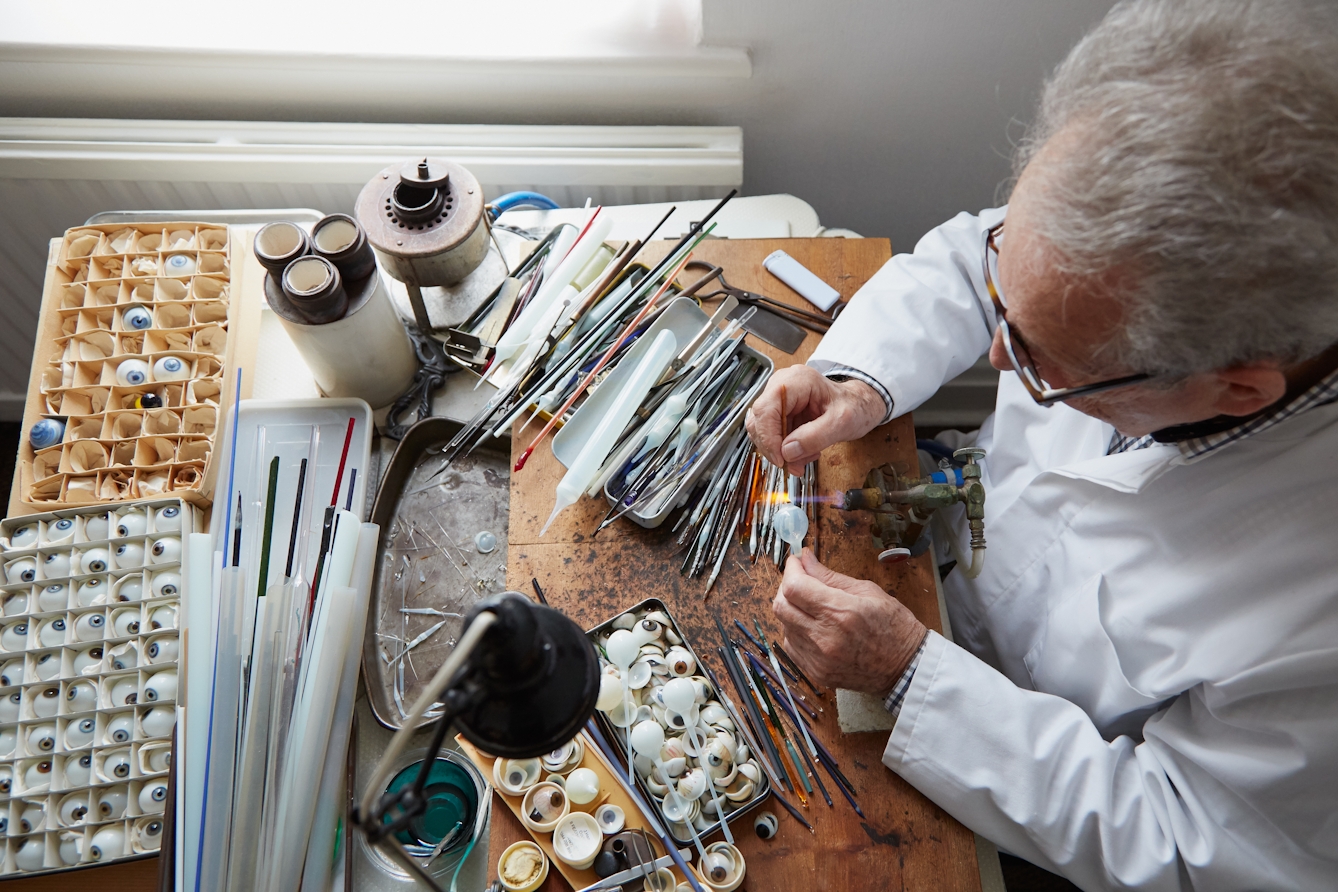
Jost at his workbench, which is in a small room in his home.
Jost’s way of working seems pretty unique. A patient will sit with him over two or three hours while he custom makes and paints their prothesis in front of them. He will then fit the eye, so the patient can leave with it in place. Jost explains that colour and shape are key, and realism and comfort are his aims. Getting the fit right is the most challenging part of the process.
Making a glass eye
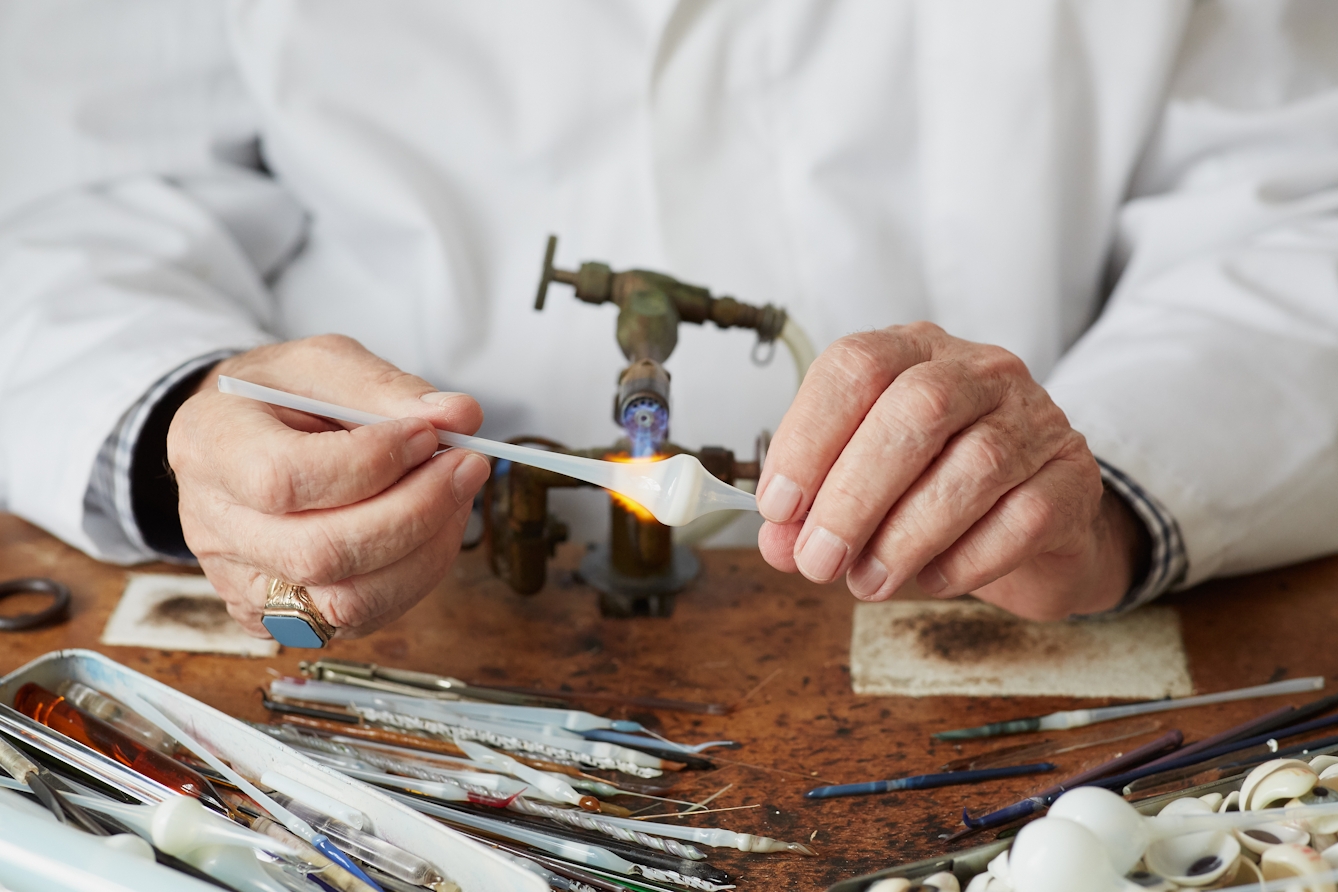
The eye-making process starts with a length of glass tubing. Jost uses a type of glass called cryolite, which he sources from Lauscha, a town in Germany that’s famous for blown glass, especially Christmas baubles.
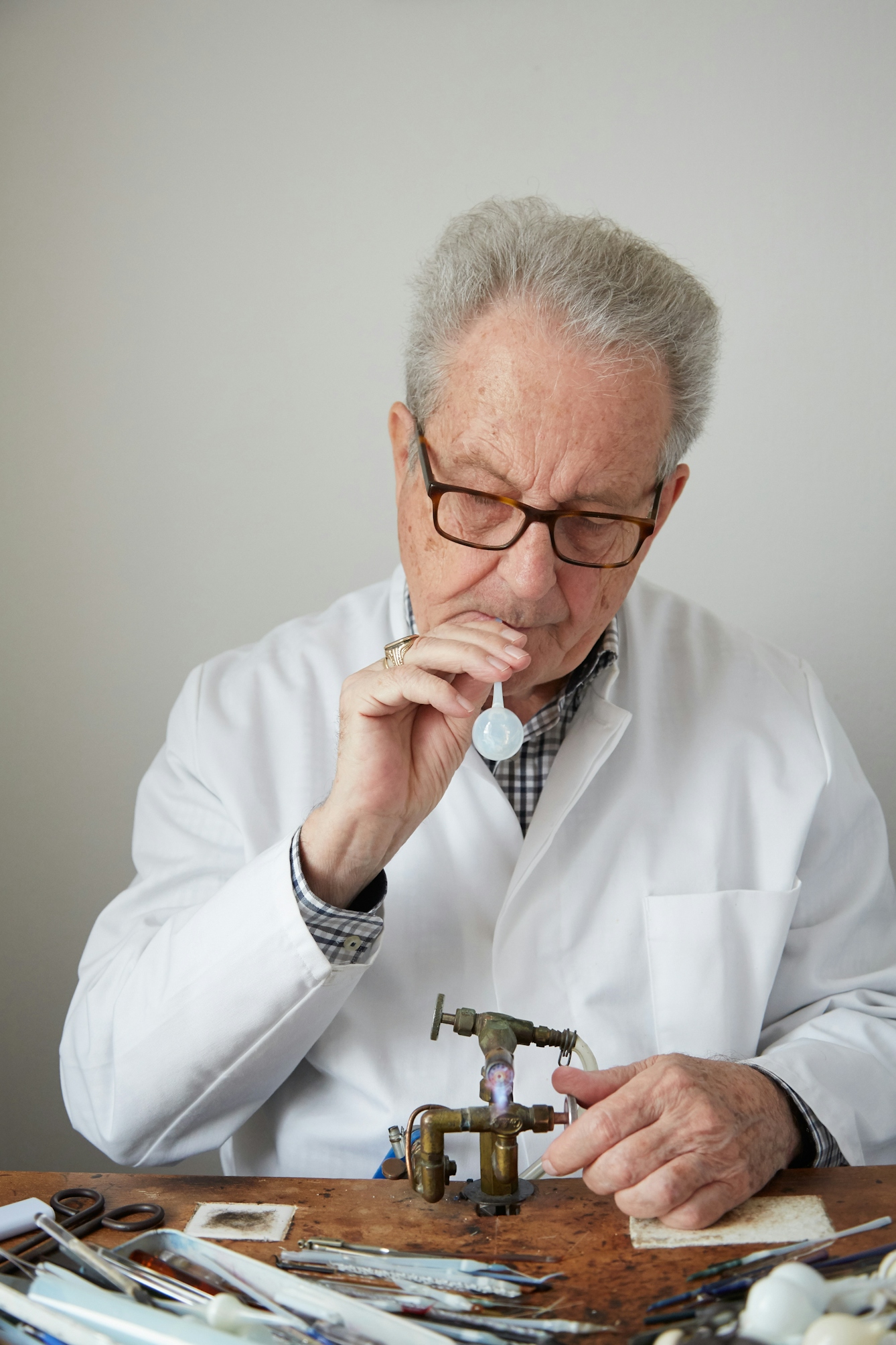
Jost heats the end of the glass rod in the Bunsen burner. He then blows a ball that’s the right shape and size to match the patient's eye.
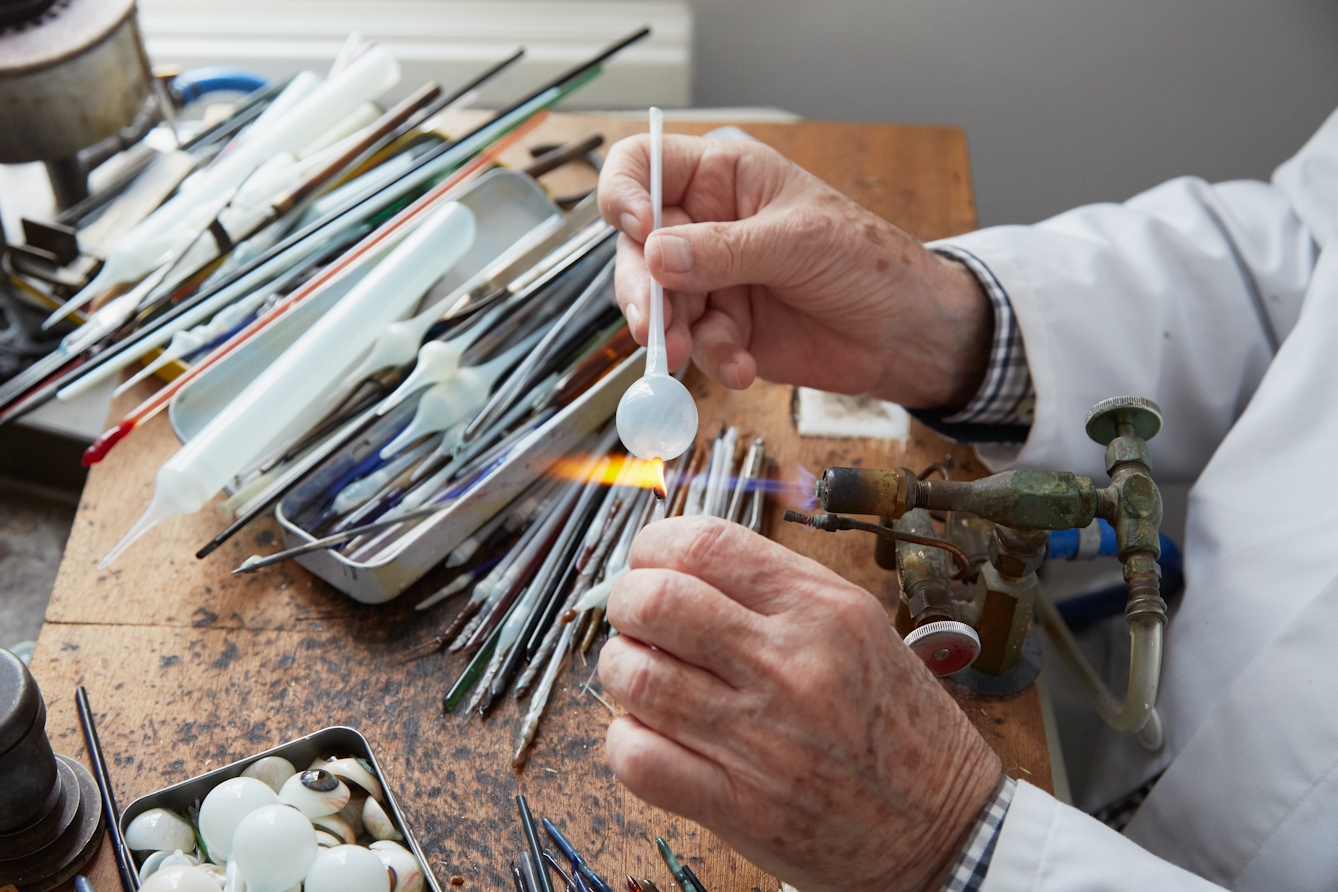
He fuses a dark glass disc onto this ball to create the iris.

Jost then ‘paints’ onto this disc with rods of coloured glass, working to match the patient's eye colour.
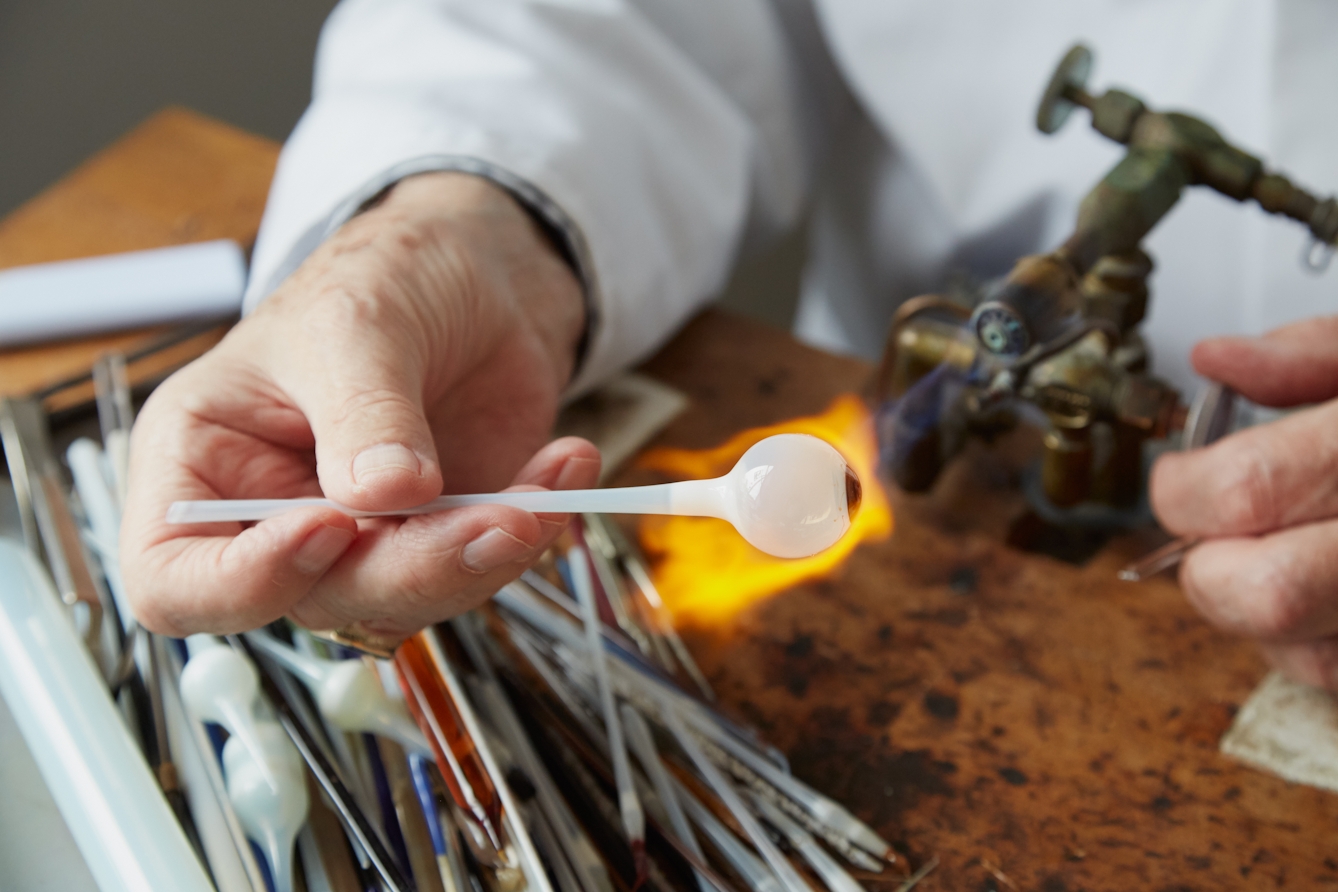
He far prefers to work with the patient in situ to get the best match, but if they can't travel to him he will work from a pattern.
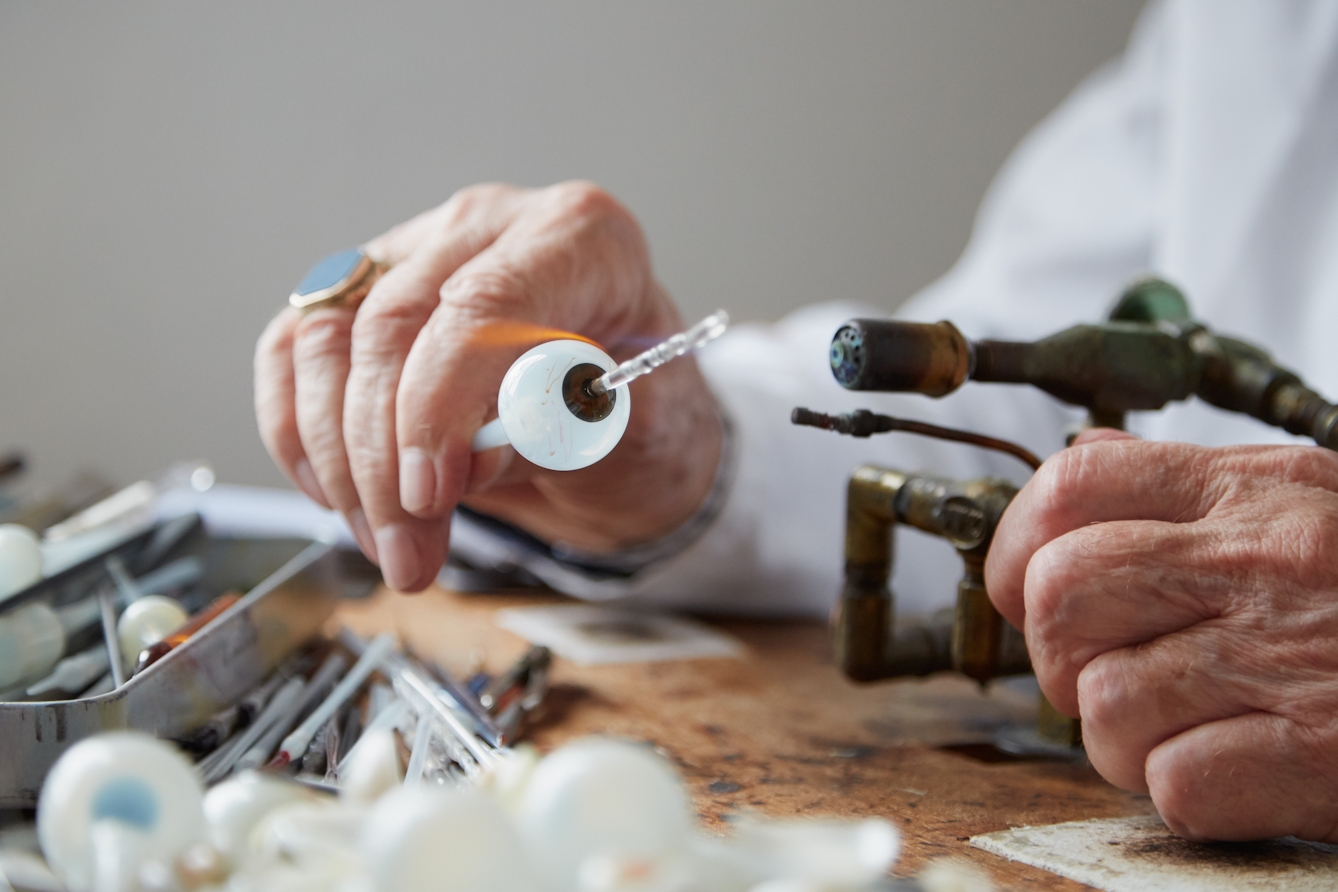
Jost will go to great lengths to match the eye to the patient, adding tiny details, including veins.
What’s perhaps most surprising about Jost Haas is where he works. After the six-hour drive, that patient he’s expecting won’t arrive at a hospital in the centre of town or at a smart private studio, but rather at the house where Jost has lived since he moved to the outer edge of London in 1968.
Tucked inside a well-kept but entirely ordinary-looking house, on a cherry tree-lined street in deepest suburbia, Jost’s workspace is a tiny front room, with blank white walls and carpet tiles on the floor. It has two desks in it – one for paperwork, the other littered with eye-making kit, including numerous glass rods and a gas Bunsen burner, which is hooked up to the mains. It’s here that Jost makes protheses while his patients watch and wait in a chair tucked to one side.
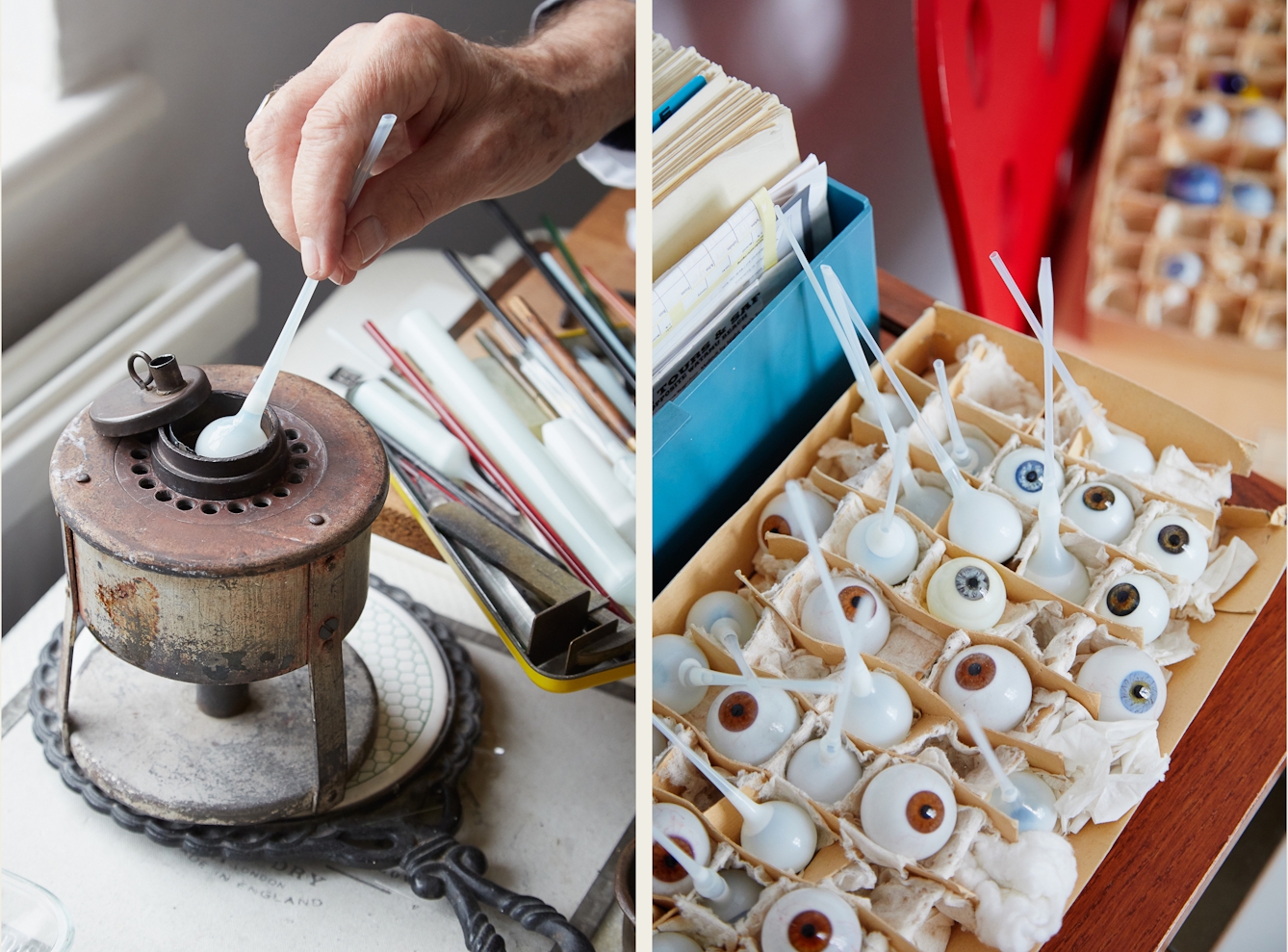
Prosthetic eyes before Jost removes their glass tubes.
Jost explains that the protheses he makes are more than just cosmetic: they offer people protection, both physical and psychological, and he offers “an element of psychological support” as well as an eye-making service.
I ask Jost how he sees himself – as a craftsperson, a medic, something in between? He says medics heal, and so he couldn’t be called that, but he’s happy with craftsperson. He does have a caring role, though, as well as a practical one. For those few hours when they sit in Jost’s office, with the white noise of the gas burner blurring out any other background sound, Jost’s patients have a safe place to talk, or simply to rest. Jost says the burner’s gentle roar will often send people to sleep.

Jost Haas.
Jost is semi-retired with nobody lined up to succeed him. He seems comfortable with the idea that he’s the last glass-eye maker in Britain, pointing out that there are still plenty of people doing it in other parts of the world, particularly in Germany.
But Jost is keen to share his knowledge, and happily welcomes artists, photographers and writers into his space. He’s recently produced eyes for a sculptor who plans to fix them into his bronzes, as well as agreeing to let a poet watch him work for several hours. “It’s not often I meet a poet!” he says.
Jost seems invigorated by these experiences, ones that will introduce his craft to a wider public. He also points out that the photographs in this essay will give someone all the information they need to get started as a glass-eye maker: “He or she could actually see how the whole thing is done… Perhaps there will be somebody else coming along – you never know.”
About the contributors
Carmel King
Carmel King photographs makers and manufacturers across the UK, documenting British craft and industry. She is particularly interested in capturing regions of the country that are known for specific crafts and long-running family firms, where skills and knowledge are passed down through generations. In October 2022 Merrell published ‘Made in London‘, which Carmel King co-authored with Mark Brearley, which looks behind the scenes of 50 workshops and factories across the capital.
Helen Babbs
Helen is a Digital Editor for Wellcome Collection.
